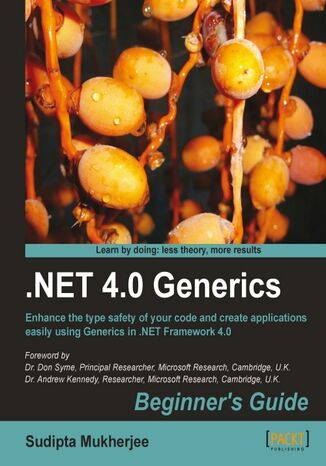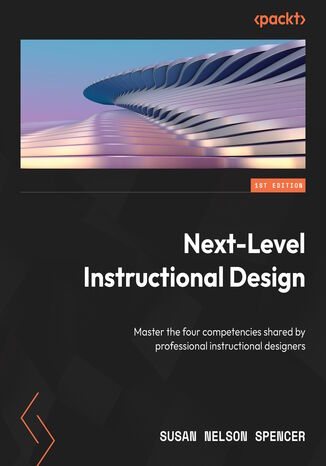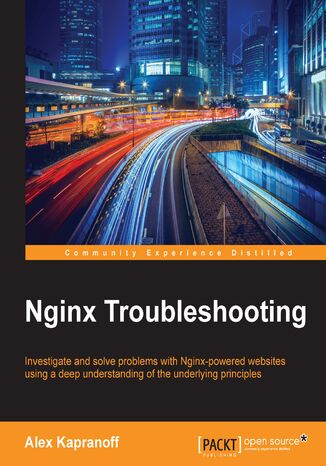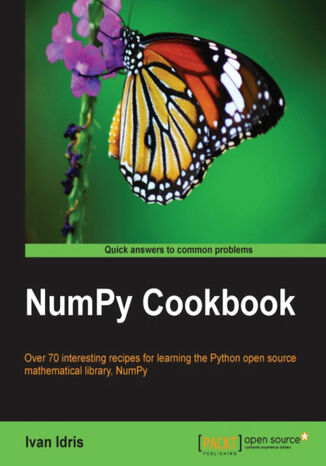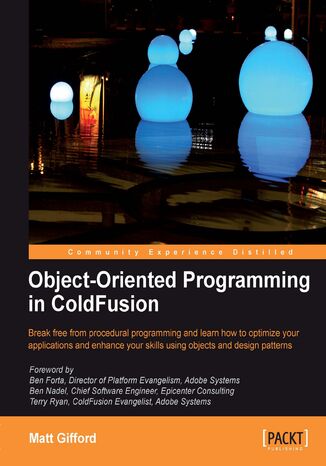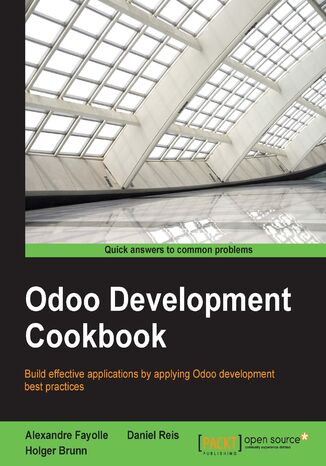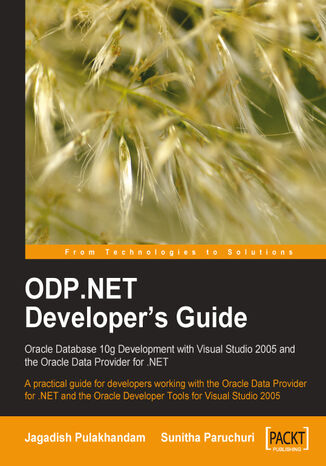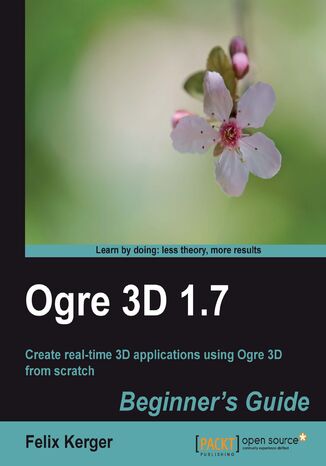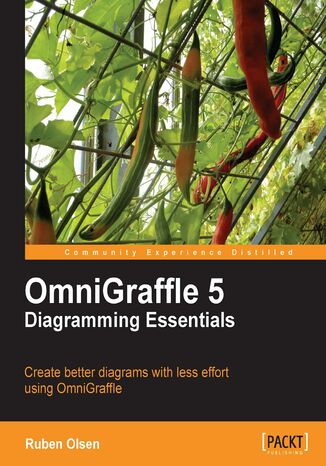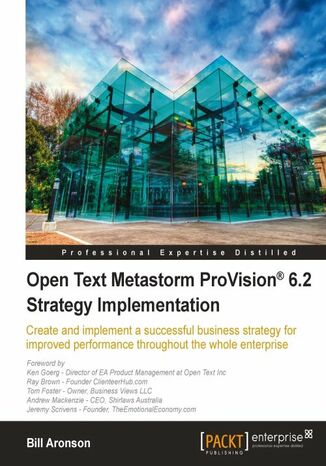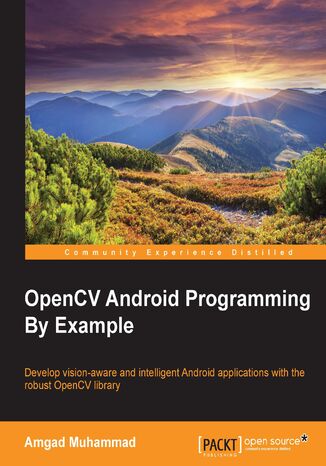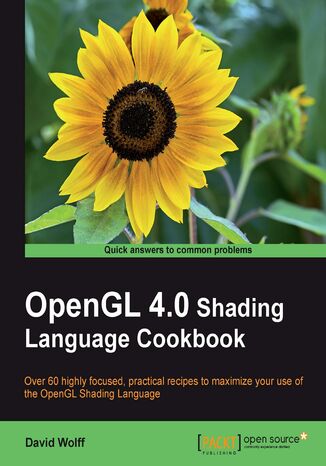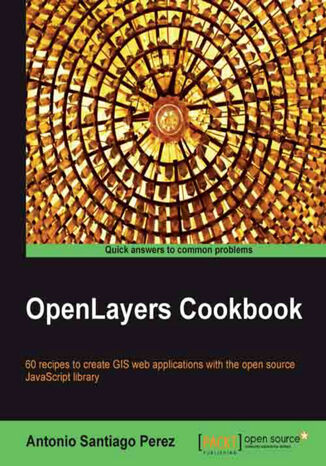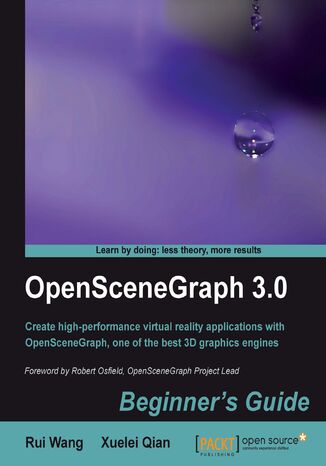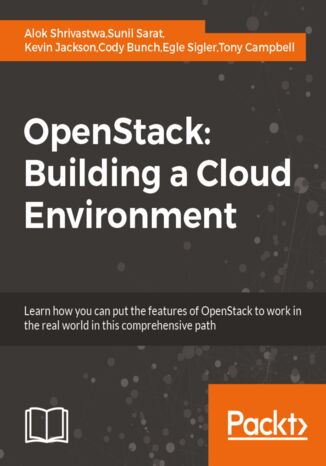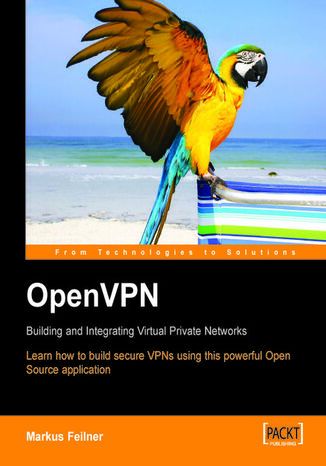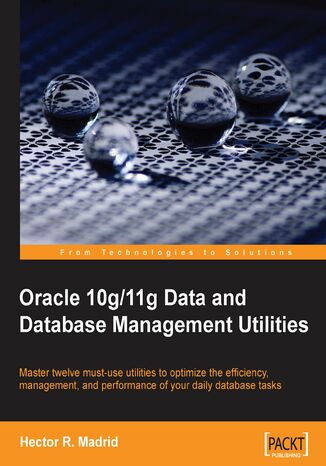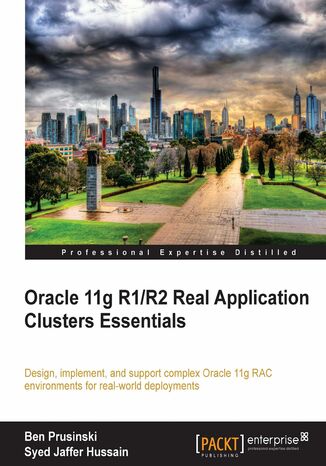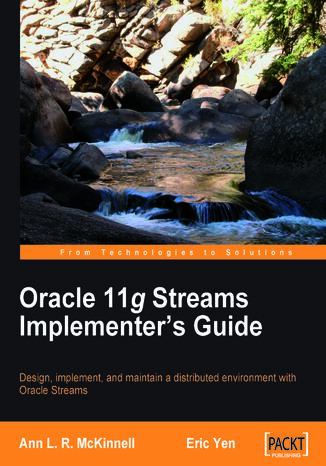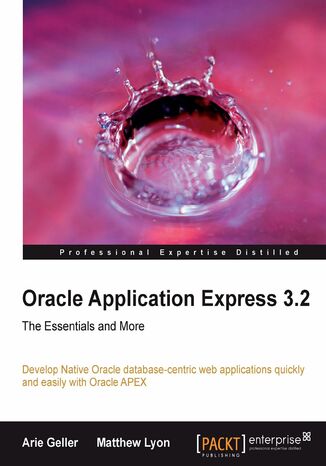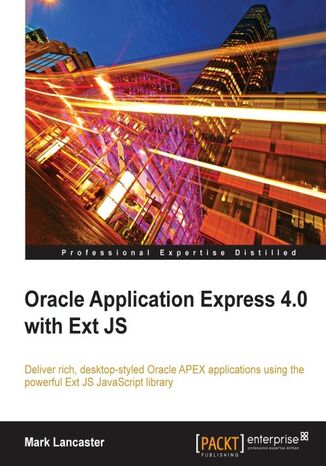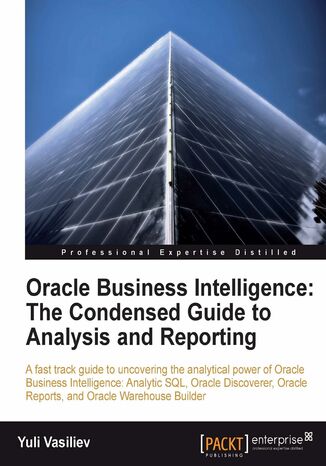Категорії
-
- Біткойн
- Ділова жінка
- Коучинг
- Контроль
- Електронний бізнес
- Економіка
- Фінанси
- Фондова біржа та інвестиції
- Особисті компетенції
- Комп'ютер в офісі
- Комунікація та переговори
- Малий бізнес
- Маркетинг
- Мотивація
- Мультимедійне навчання
- Нерухомість
- Переконання та НЛП
- Податки
- Соціальна політика
- Порадники
- Презентації
- Лідерство
- Зв'язки з громадськістю
- Звіти, аналізи
- Секрет
- Соціальні засоби комунікації
- Продаж
- Стартап
- Ваша кар'єра
- Управління
- Управління проектами
- Людські ресурси (HR)
-
- Architektura i wnętrza
- Безпека життєдіяльності
- Biznes i Ekonomia
- Будинок та сад
- Електронний бізнес
- Ekonomia i finanse
- Езотерика
- Фінанси
- Особисті фінанси
- Бізнес
- Фотографія
- Інформатика
- Відділ кадрів та оплата праці
- Для жінок
- Комп'ютери, Excel
- Бухгалтерія
- Культура та література
- Наукові та академічні
- Охорона навколишнього середовища
- Впливові
- Освіта
- Податки
- Подорожі
- Психологія
- Релігія
- Сільське господарство
- Ринок книг і преси
- Транспорт та спедиція
- Здоров'я та краса
-
- Офісні застосунки
- Бази даних
- Біоінформатика
- Бізнес ІТ
- CAD/CAM
- Digital Lifestyle
- DTP
- Електроніка
- Цифрова фотографія
- Комп'ютерна графіка
- Ігри
- Хакування
- Hardware
- IT w ekonomii
- Наукові пакети
- Шкільні підручники
- Основи комп'ютера
- Програмування
- Мобільне програмування
- Інтернет-сервери
- Комп'ютерні мережі
- Стартап
- Операційні системи
- Штучний інтелект
- Технологія для дітей
- Вебмайстерність
-
- Антології
- Балада
- Біографії та автобіографії
- Для дорослих
- Драми
- Журнали, щоденники, листи
- Епос, епопея
- Нарис
- Наукова фантастика та фантастика
- Фельєтони
- Художня література
- Гумор, сатира
- Інше
- Класичний
- Кримінальний роман
- Нехудожня література
- Художня література
- Mity i legendy
- Лауреати Нобелівської премії
- Новели
- Побутовий роман
- Okultyzm i magia
- Оповідання
- Спогади
- Подорожі
- Оповідна поезія
- Поезія
- Політика
- Науково-популярна
- Роман
- Історичний роман
- Проза
- Пригодницька
- Журналістика
- Роман-репортаж
- Romans i literatura obyczajowa
- Сенсація
- Трилер, жах
- Інтерв'ю та спогади
-
- Археологія
- Bibliotekoznawstwo
- Кінознавство / Теорія кіно
- Філологія
- Польська філологія
- Філософія
- Finanse i bankowość
- Географія
- Економіка
- Торгівля. Світова економіка
- Історія та археологія
- Історія мистецтва і архітектури
- Культурологія
- Мовознавство
- літературні студії
- Логістика
- Математика
- Ліки
- Гуманітарні науки
- Педагогіка
- Навчальні засоби
- Науково-популярна
- Інше
- Психологія
- Соціологія
- Театральні студії
- Богослов’я
- Економічні теорії та науки
- Transport i spedycja
- Фізичне виховання
- Zarządzanie i marketing
-
- Безпека життєдіяльності
- Історія
- Дорожній кодекс. Водійські права
- Юридичні науки
- Охорона здоров'я
- Загальне, компендіум
- Академічні підручники
- Інше
- Закон про будівництво і житло
- Цивільне право
- Фінансове право
- Господарське право
- Господарське та комерційне право
- Кримінальний закон
- Кримінальне право. Кримінальні злочини. Кримінологія
- Міжнародне право
- Міжнародне та іноземне право
- Закон про охорону здоров'я
- Закон про освіту
- Податкове право
- Трудове право та законодавство про соціальне забезпечення
- Громадське, конституційне та адміністративне право
- Кодекс про шлюб і сім'ю
- Аграрне право
- Соціальне право, трудове право
- Законодавство Євросоюзу
- Промисловість
- Сільське господарство та захист навколишнього середовища
- Словники та енциклопедії
- Державні закупівлі
- Управління
-
- Африка
- Альбоми
- Південна Америка
- Центральна та Північна Америка
- Австралія, Нова Зеландія, Океанія
- Австрія
- Азії
- Балкани
- Близький Схід
- Болгарія
- Китай
- Хорватія
- Чеська Республіка
- Данія
- Єгипет
- Естонія
- Європа
- Франція
- Гори
- Греція
- Іспанія
- Нідерланди
- Ісландія
- Литва
- Латвія
- Mapy, Plany miast, Atlasy
- Мініпутівники
- Німеччина
- Норвегія
- Активні подорожі
- Польща
- Португалія
- Інше
- Przewodniki po hotelach i restauracjach
- Росія
- Румунія
- Словаччина
- Словенія
- Швейцарія
- Швеція
- Світ
- Туреччина
- Україна
- Угорщина
- Велика Британія
- Італія
-
- Філософія життя
- Kompetencje psychospołeczne
- Міжособистісне спілкування
- Mindfulness
- Загальне
- Переконання та НЛП
- Академічна психологія
- Психологія душі та розуму
- Психологія праці
- Relacje i związki
- Батьківство та дитяча психологія
- Вирішення проблем
- Інтелектуальний розвиток
- Секрет
- Сексуальність
- Спокушання
- Зовнішній вигляд та імідж
- Філософія життя
-
- Біткойн
- Ділова жінка
- Коучинг
- Контроль
- Електронний бізнес
- Економіка
- Фінанси
- Фондова біржа та інвестиції
- Особисті компетенції
- Комунікація та переговори
- Малий бізнес
- Маркетинг
- Мотивація
- Нерухомість
- Переконання та НЛП
- Податки
- Соціальна політика
- Порадники
- Презентації
- Лідерство
- Зв'язки з громадськістю
- Секрет
- Соціальні засоби комунікації
- Продаж
- Стартап
- Ваша кар'єра
- Управління
- Управління проектами
- Людські ресурси (HR)
-
- Антології
- Балада
- Біографії та автобіографії
- Для дорослих
- Драми
- Журнали, щоденники, листи
- Епос, епопея
- Нарис
- Наукова фантастика та фантастика
- Фельєтони
- Художня література
- Гумор, сатира
- Інше
- Класичний
- Кримінальний роман
- Нехудожня література
- Художня література
- Mity i legendy
- Лауреати Нобелівської премії
- Новели
- Побутовий роман
- Okultyzm i magia
- Оповідання
- Спогади
- Подорожі
- Поезія
- Політика
- Науково-популярна
- Роман
- Історичний роман
- Проза
- Пригодницька
- Журналістика
- Роман-репортаж
- Romans i literatura obyczajowa
- Сенсація
- Трилер, жах
- Інтерв'ю та спогади
-
- Філософія життя
- Міжособистісне спілкування
- Mindfulness
- Загальне
- Переконання та НЛП
- Академічна психологія
- Психологія душі та розуму
- Психологія праці
- Relacje i związki
- Батьківство та дитяча психологія
- Вирішення проблем
- Інтелектуальний розвиток
- Секрет
- Сексуальність
- Спокушання
- Зовнішній вигляд та імідж
- Філософія життя
- Електронні книги
- Інформатика
- Hardware
Hardware
Książki online z kategorii Hardware pomogą Ci nabyć praktycznych umiejętności z zakresu składania zestawów komputerowych oraz ich naprawy. Dowiesz się także, jak wykorzystywać popularne języki programowania typu JavaScript i C++ do tworzenia ciekawych projektów (np. systemów sygnalizacyjnych). Zainteresować mogą Cię też poradniki wprowadzające do Arduino.
Generics were added as part of .NET Framework 2.0 in November 2005. Although similar to generics in Java, .NET generics do not apply type erasure but every object has unique representation at run-time. There is no performance hit from runtime casts and boxing conversions, which are normally expensive..NET offers type-safe versions of every classical data structure and some hybrid ones.This book will show you everything you need to start writing type-safe applications using generic data structures available in Generics API. You will also see how you can use several collections for each task you perform. This book is full of practical examples, interesting applications, and comparisons between Generics and more traditional approaches. Finally, each container is bench marked on the basis of performance for a given task, so you know which one to use and when.This book first covers the fundamental concepts such as type safety, Generic Methods, and Generic Containers. As the book progresses, you will learn how to join several generic containers to achieve your goals and query them efficiently using Linq. There are short exercises in every chapter to boost your knowledge.The book also teaches you some best practices, and several patterns that are commonly available in generic code.Some important generic algorithm definitions are present in Power Collection (an API created by Wintellect Inc.) that are missing from .NET framework. This book shows you how to use such algorithms seamlessly with other generic containers.The book also discusses C5 collections. Java Programmers will find themselves at home with this API. This is the closest to JCF. Some very interesting problems are solved using generic containers from .NET framework, C5, and PowerCollection Algorithms ñ a clone of Google Set and Gender Genie for example!The author has also created a website (http://www.consulttoday.com/genguide) for the book where you can find many useful tools, code snippets, and, applications, which are not the part of code-download section
The field of instructional design offers a rapidly growing, flexible, and rewarding career path. Chances are that if you’re a teacher creating training material, college professor designing educational courses, human resources professional creating learning content, or even a graphic designer curating content, you may already be engaging in instructional designing without even realizing it!This book teaches you all about the four capabilities that are most important to exceling as an instructional designer—teaching, writing, creating, and analyzing. The chapters are designed in a way that provides you with practical tips for day-to-day learning projects through true ID stories. You’ll get familiar with common misconceptions surrounding the field, along with how to overcome your shortcomings. With the help of easy-to-understand real-world case studies and practical tips, each chapter focuses on developing one particular competency to help you grasp the concepts with ease.By the end of this book, you’ll have gained a comprehensive understanding of the key competencies needed to succeed in this field and their importance, and learned how to develop them effectively.
Alex Kapranoff, Rainer Duffner, Antonio Almeida, Alexey Kapranov
Nginx is clearly winning the race to be the dominant software to power modern websites. It is fast and open source, maintained with passion by a brilliant team. This book will help you maintain your Nginx instances in a healthy and predictable state.It will lead you through all the types of problems you might encounter as a web administrator, with a special focus on performance and migration from older software.You will learn how to write good configuration files and will get good insights into Nginx logs. It will provide you solutions to problems such as missing or broken functionality and also show you how to tackle performance issues with the Nginx server. A special chapter is devoted to the art of prevention, that is, monitoring and alerting services you may use to detect problems before they manifest themselves on a big scale. The books ends with a reference to error and warning messages Nginx could emit to help you during incident investigations.
Today's world of science and technology is all about speed and flexibility. When it comes to scientific computing, NumPy is on the top of the list. NumPy will give you both speed and high productivity.NumPy Cookbook will teach you all about NumPy, a leading scientific computing library. NumPy replaces a lot of the functionality of Matlab and Mathematica, but in contrast to those products, it is free and open source.Numpy Cookbook will teach you to write readable, efficient, and fast code that is as close to the language of Mathematics as much as possible with the cutting edge open source NumPy software library.You will learn about installing and using NumPy and related concepts. At the end of the book, we will explore related scientific computing projects.This book will give you a solid foundation in NumPy arrays and universal functions. You will also learn about plotting with Matplotlib and the related SciPy project through examples.NumPy Cookbook will help you to be productive with NumPy and write clean and fast code.
Are you tired of procedural programming or is your extensive code base starting to become un-manageable? Breathe some new life into your code and improve your development skills with the basic concepts of object-oriented programming. Utilize objects, modular components, and design patterns to expand your skills and improve your ColdFusion applications. Packed with example code, and written in a friendly, easy-to-read style, this book is just what you need if you are serious about ColdFusion.This book is a fast-paced tutorial to important ColdFusion object-oriented programming topics. It will give you clear, concise, and practical guidance to take you from the basics of ColdFusion to the skills that will make you a ColdFusion developer to be reckoned with. Don't be put off by jargon or complex diagrams; read and see how you can benefit from this book and extend your development skills in the process.Using the practical examples within this guide, you will learn how to structure your applications and code, applying the fundamental basics of object-oriented programming to develop modular, reusable components that will scale easily with your application. You will learn the basic fundamental practices of object-oriented programming, from object creation and re-use, to Bean objects, service layers, Data Access objects, and sample design patterns to gain a better understanding of OOP using examples that can be altered and applied in your application. Complete with detailed code samples and snippets, and written in a friendly easy-to-follow style, you will be able to break free from writing purely procedural code and enhance your applications by building structured applications utilizing basic design patterns and object-oriented principles.
Odoo Development Cookbook. Build effective applications by applying Odoo development best practices
Holger Brunn, Alexandre Fayolle, Daniel Reis
Odoo is a full-featured open source ERP with a focus on extensibility. The flexibility and sustainability of open source is also a key selling point of Odoo. It is built on a powerful framework for rapid application development, both for back-end applications and front-end websites.The book starts by covering Odoo installation and administration, and provides a gentle introduction to application development. It then dives deep into several of the areas that an experienced developer will need to use. You’ll learn implement business logic, adapt the UI, and extend existing features.
Sunitha Paruchuri, Jagadish Chatarji Pulakhandam, Jagadish Pulakhandam
The Oracle Data Provider for .NET (ODP.NET) features optimized data access to the Oracle database from a .NET environment and allows developers to take advantage of advanced Oracle database functionality, including Real Application Clusters, XML DB, and advanced security. It can be used from any .NET language, including C# and VB.NET.This book is a practical guide that will give you the in-depth information you need to work with the Oracle 10g v10.2 database from Visual Studio .NET 2005, using the Oracle Developer Tools and ODP.NET. After introducing ODP.NET, we move on to dealing with SQL, PL/SQL, and XML DB using ODP.NET. Next we look at application development with ODP.NET: Web Applications, Web Services, and Mobile Applications. The last chapter covers Oracle Developer Tools for Visual Studio .NET. All the code examples are in Visual Basic.NET 2005.http://www.packtpub.com/article/ODP-dot-net-oracle-data-provider-table-of-conten - Read the full Table of Contents for ODP.NET Developer's GuideChapter-by-ChapterChapter 1 introduces the concept of Oracle Database Extensions for .NET and provides information about Oracle Developer tools for Visual Studio.Chapter 2 introduces the Provider Independent Model in ADO.NET 2.0, and shows how to connect to Oracle databases from .NET, working with .NET data providers, connection pooling, system privileged connection, and single sign-on etc.Chapter 3 shows you several methods to retrieve data from an Oracle database. You will work with the core ODP.NET classes like OracleCommand, OracleDataReader, OracleDataAdapter, OracleParameter and ADO.NET classes like Dataset, DataTable, and DataRow etc.Chapter 4 is about inserting, updating, and deleting data in the database. You will also learn about statement caching, array binding, working with offline data, implementing transactions, and handling errors and exceptions encountered during database work.Chapter 5 deals with working with PL/SQL blocks, PL/SQL stored procedures, and functions. It also teaches you how to execute routines in PL/SQL packages, how to pass and receive arrays from the Oracle database, and working with REF CURSOR using ODP.NET.Chapter 6 is completely dedicated to dealing with Large objects in Oracle. This chapter illustrates concepts, configurations, and programming for BFILE, BLOB, and CLOB (or NCLOB) in conjunction with ODP.NET.Chapter 7 gives details about Oracle XML DB, an add-on feature of Oracle database. It provides information about generating XML from existing rows in tables, manipulating rows in a table using XML, and working with native XML in the Oracle database.Chapter 8 deals with real-time application development scenarios like Oracle database change notifications, Asynchronous Application development, Web Application development using ASP.NET 2.0, Web Reporting (including grouping, sub-totals, charts etc.), Object-Oriented Development with ODP.NET and ASP.NET, XML Web Services development using ODP.NET and Smart Device Application development (for clients like the Pocket PC etc.).Chapter 9 introduces you to Oracle Developer Tools for Visual Studio 2005. It teaches you to connect to Oracle from the Visual Studio 2005 environment, retrieve Oracle information from Visual Studio, and work with database objects from Visual Studio. It also provides information about how to create and debug PL/SQL stored procedures and .NET CLR Stored Procedures in Oracle.
OGRE 3D 1.7 Beginner's Guide. Create real time 3D applications using OGRE 3D from scratch
Want to make your own 3D applications, simulations, and games?OGRE 3D, an open source Object-Oriented 3D Graphics Rendering Engine written in C++, which can be utilized to create a variety of 3D applications and is commonly used in game creation, can help you to do so!OGRE 3D 1.7 Beginner's Guide, based on the latest version 1.7, makes it super easy for you to make your own monsters, spaceship shooters, weapons, enemies, and more!OGRE 3D 1.7 Beginner's Guide will teach you to develop 3D applications that are exciting and interesting and if used correctly can result in stunning games and simulations. You will start from the very beginning and then work your way up to complex scenes and stunning effects.In this book you will start with how to download and configure OGRE 3D, then create your first example scene. With the help of this sample scene, you will be introduced to several related topics each of which will be explained through several other examples and by do-it-yourself tasks.After each example there is a section that explains the theory behind the technique used for deeper understanding. You will also use what you learned in one example in another example and repeat each technique several times while learning new ones at the same time to strengthen the topics learned. Within no time you will master the art of game creation. Imagine how great you will feel when all your friends are playing the great-looking games you've created with OGRE 3D and this book.
If a picture is worth a thousand words, why settle for anything less? Creating good visualizations to substantiate your ideas is essential in today's corporate environment. Use OmniGraffle's remarkably powerful and flexible features to get your diagrams right. Although fun to use, it can get cumbersome to find out exactly how to get what you want.This book will teach you how to make stunning diagrams without spending much time and energy. No matter if you have never used OmniGraffle, or if you are using it on a daily basis, this book will teach you how to get the most out of this splendid diagramming tool. It will first teach you the basics of the program and then extend your knowledge to a higher level.The book will teach you to make eye-popping visuals using a lot of useful, step-by-step examples. It begins with covering concepts that beef up your basics of using OmniGraffle. The earlier chapters will teach you to prepare dazzling diagrams from scratch with the many stencils, shapes, and fonts that are included in OmniGraffle. As your understanding of OmniGraffle broadens, the book will go even deeper to explain the less understood features of the software. It also covers some handy time-saving techniques such as workspaces and keyboard shortcuts.By the time you reach the end of this book, you will have mastered OmniGraffle to turn your ideas into diagrams.
Open Text ProVision® (formerly known as Metastorm ProVision®) is an Enterprise Architecture (EA) solution allowing for effective planning and decision making throughout the enterprise. It enables an organization to have a central repository of information about the business, reducing organizational risks and better optimizing business resources.Implemented well, it enables better and more actionable decisions exactly when you need them.This book combines theory and practice to provide a step- by- step guide to building a successful customer- centric model of your business. The approach is simple and down to earth, and along the way, with various real-world examples, you will learn how to make a business case, use a framework, and adopt a methodology with Open Text ProVision®. This book draws on the experience of ProVision® experts around the world. By combining theory with practice from the field you can avoid common mistakes and develop a successful customer centric strategy for implementing ProVision®. Each chapter builds on the previous one to give you the confidence to implement a central repository, dealing with both the technical and human issues that you might face.
Amgad Muhammad, Erik Hellman, Erik A Westenius, Amgad M Ahmed Muhammad
Starting from the basics of computer vision and OpenCV, we'll take you all the way to creating exciting applications. You will discover that, though computer vision is a challenging subject, the ideas and algorithms used are simple and intuitive, and you will appreciate the abstraction layer that OpenCV uses to do the heavy lifting for you. Packed with many examples, the book will help you understand the main data structures used within OpenCV, and how you can use them to gain performance boosts. Next we will discuss and use several image processing algorithms such as histogram equalization, filters, and color space conversion. You then will learn about image gradients and how they are used in many shape analysis techniques such as edge detection, Hough Line Transform, and Hough Circle Transform. In addition to using shape analysis to find things in images, you will learn how to describe objects in images in a more robust way using different feature detectors and descriptors. By the end of this book, you will be able to make intelligent decisions using the famous Adaboost learning algorithm.
The OpenGL Shading Language (GLSL) is a programming language used for customizing parts of the OpenGL graphics pipeline that were formerly fixed-function, and are executed directly on the GPU. It provides programmers with unprecedented flexibility for implementing effects and optimizations utilizing the power of modern GPUs. With version 4.0, the language has been further refined to provide programmers with greater flexibility, and additional features have been added such as an entirely new stage called the tessellation shader.The OpenGL Shading Language 4.0 Cookbook provides easy-to-follow examples that first walk you through the theory and background behind each technique then go on to provide and explain the GLSL and OpenGL code needed to implement it. Beginning level through to advanced techniques are presented including topics such as texturing, screen-space techniques, lighting, shading, tessellation shaders, geometry shaders, and shadows.The OpenGL Shading Language 4.0 Cookbook is a practical guide that takes you from the basics of programming with GLSL 4.0 and OpenGL 4.0, through basic lighting and shading techniques, to more advanced techniques and effects. It presents techniques for producing basic lighting and shading effects; examples that demonstrate how to make use of textures for a wide variety of effects and as part of other techniques; examples of screen-space techniques, shadowing, tessellation and geometry shaders, noise, and animation.The OpenGL Shading Language 4.0 Cookbook provides examples of modern shading techniques that can be used as a starting point for programmers to expand upon to produce modern, interactive, 3D computer graphics applications.
Antonio Santiago Perez, Antonio Santiago
Data visualization and analysis has become an important task for many companies. Understanding the basic concepts of GIS and knowing how to visualize data on a map is a required ability for many professionals today. OpenLayers is a JavaScript library to load, display, and render maps from multiple sources on web pages.OpenLayers Cookbook teaches how to work with OpenLayers, one of the most important and complete open source JavaScript libraries.Through an extensive set of recipes, this book shows how to work with the main concepts required to build a GIS web applicationñ maps, raster and vector layers, styling, theming, and so on.OpenLayers Cookbook includes problem solving and how-to recipes for the most common and important tasks. A wide range of topics are covered.The range of recipes includes: creating basic maps, working with raster and vector layers, understanding events and working with main controls, reading features from different data sources, styling features, and understanding the underlying architecture.OpenLayers Cookbook describes solutions and optimizations to problems commonly found.
OpenNI Cookbook. Learn how to write NIUI-based applications and motion-controlled games
The release of Microsoft Kinect, then PrimeSense Sensor, and Asus Xtion opened new doors for developers to interact with users, re-design their application’s UI, and make them environment (context) aware. For this purpose, developers need a good framework which provides a complete application programming interface (API), and OpenNI is the first choice in this field. This book introduces the new version of OpenNI.OpenNI Cookbook will show you how to start developing a Natural Interaction UI for your applications or games with high level APIs and at the same time access RAW data from different sensors of different hardware supported by OpenNI using low level APIs. It also deals with expanding OpenNI by writing new modules and expanding applications using different OpenNI compatible middleware, including NITE.OpenNI Cookbook favors practical examples over plain theory, giving you a more hands-on experience to help you learn. OpenNI Cookbook starts with information about installing devices and retrieving RAW data from them, and then shows how to use this data in applications. You will learn how to access a device or how to read data from it and show them using OpenGL, or use middleware (especially NITE) to track and recognize users, hands, and guess the skeleton of a person in front of a device, all through examples.You also learn about more advanced aspects such as how to write a simple module or middleware for OpenNI itself.OpenNI Cookbook shows you how to start and experiment with both NIUI designs and OpenNI itself using examples.
Xuelei Qian, Rui Wang, Robert Osfield
Virtual reality has quite a lot of demand in computer science today and OpenSceneGraph, being one of the best 3D graphics toolkits, is being used widely. Although you can use the powerful OpenSceneGraph, based on the low-level OpenGL API, to implement virtual-reality applications that simulate different environments in the 3D world, developing picture-perfect applications is easier said than done.This book has been written with the goal of helping readers become familiar with the structure and main functionalities of OpenSceneGraph (OSG), and guide them to develop virtual-reality applications using this powerful 3D graphics engine. This book covers the essence of OpenSceneGraph (OSG), providing programmers with detailed explanations and examples of scene graph APIs.This book helps you take full advantages of the key features and functionalities of OpenSceneGraph (OSG). You will learn almost all of the core elements required in a virtual reality application, including memory management, geometry creation, the structure of the scene graph, realistic rendering effects, scene navigation, animation, interaction with input devices and external user interfaces, file reading and writing, and so on.With the essential knowledge contained in this book, you will be able to start using OSG in your own projects and research fields, and extend its functionalities by referring to OSG's source code, official examples and API documentation.This handy book divides the core functionalities of the proved and comprehensive OpenSceneGraph (OSG) 3D graphics engine into different aspects, which are introduced in separate chapters. Each chapter can be treated as an individual part that covers one important field of OSG programming, along with several examples illustrating concrete usages and solutions. But the sequence of chapters is also organized from the easy to the more difficult, to help you get to grips with OSG.By the end of the whole book, you will have gained a ready-to-use OSG development environment for yourself and have the general ability to develop OSG-based applications and extend practical functionalities for your own purposes.
OpenStack: Building a Cloud Environment. Building a Cloud Environment
Kevin Jackson, Egle Sigler, Alok Shrivastwa, Cody Bunch, ...
OpenStack is a collection of software projects that work together to provide a cloud fabric.Learning OpenStack Cloud Computing course is an exquisite guide that you will need to build cloud environments proficiently. This course will help you gain a clearer understanding of OpenStack’s components and their interaction with each other to build a cloud environment. The first module, Learning OpenStack, starts with a brief look into the need for authentication and authorization, the different aspects of dashboards, cloud computing fabric controllers, along with 'Networking as a Service' and 'Software defined Networking'. Then, you will focus on installing, configuring, and troubleshooting different architectures such as Keystone, Horizon, Nova, Neutron, Cinder, Swift, and Glance. After getting familiar with the fundamentals and application of OpenStack, let's move deeper into the realm of OpenStack.In the second module, OpenStack Cloud Computing Cookbook, preview how to build and operate OpenStack cloud computing, storage, networking, and automation. Dive into Neutron, the OpenStack Networking service, and get your hands dirty with configuring ML2, networks, routers, and distributed virtual routers. Further, you'll learn practical examples of Block Storage, LBaaS, and FBaaS.The final module, Troubleshooting OpenStack, will help you quickly diagnose, troubleshoot, and correct problems in your OpenStack. We will diagnose and remediate issues in Keystone, Glance, Neutron networking, Nova, Cinder block storage, Swift object storage, and issues caused by Heat orchestration.This Learning Path combines some of the best that Packt has to offer in one complete, curated package. It includes content from the following Packt products:? Learning OpenStack by Alok Shrivastwa, Sunil Sarat ? OpenStack Cloud Computing Cookbook - Third Edition by Kevin Jackson , Cody Bunch, Egle Sigler ? Troubleshooting OpenStack by Tony Campbell
Imagine being able to create accurate maps that look how you want them to, and use them on the Web or in print, for free. OpenStreetMap allows exactly that, with no restrictions on how or where you use your maps. OpenStreetMap is perfect for businesses that want to include maps on their website or in publications without paying high fees. With this book in hand you have the power to make, alter, and use this geographical data in a collaborative way from anywhere on the Earth.OpenStreetMap was started because most maps you think of as free actually have legal or technical restrictions on their use, holding back people from using them in creative, productive, or unexpected ways. This book will allow you to take control of your own maps and use them smoothly. This book introduces the reader to the OpenStreetMap project and shows you how to participate in the project, and make use of the data it provides. No prior knowledge of the project is assumed, and technical details are kept to a minimum.In this book, you'll learn how easy it is to add your neighborhood to OpenStreetMap using inexpensive GPS equipment, or even no GPS at all. You'll find out how to communicate with other mappers working in the same area, and where to find more information about how to map the world around you.Once you have your area mapped, you'll learn how to turn this information into maps, whether for use in print or online, large or small, and with the details you want shown. The book describes several rendering methods, each suited to different types of map, and takes you through a tutorial on each one.
Markus Feilner, Open VPN Solutions
OpenVPN is a powerful, open source SSL VPN application. It can secure site-to-site connections, WiFi and enterprise-scale remote connections. While being a full-featured VPN solution, OpenVPN is easy to use and does not suffer from the complexity that characterizes other IPSec VPN implementations. It uses the secure and stable TLS/SSL mechanisms for authentication and encryption.This book is an easy introduction to this popular VPN application. After introducing the basics of security and VPN, the book moves on to cover using OpenVPN, from installing it on various platforms, through configuring basic tunnels, to more advanced features, such as using the application with firewalls, routers, proxy servers, and OpenVPN scripting.While providing only necessary theoretical background, the book takes a practical approach, presenting plenty of examples.
Hector R. Madrid, Hector Rivera Madrid
Does your database look complicated? Are you finding it difficult to interact with it? Database interaction is a part of the daily routine for all database professionals. Using Oracle Utilities the user can benefit from improved maintenance windows, optimized backups, faster data transfers, and more reliable security and in general can do more with the same time and resources.
Syed Jaffer Hussain, Ben Prusinski, Benjamin Scott Prusinski
Oracle RAC or Real Application Clusters is a grid computing solution that allows multiple nodes (servers) in a clustered system to mount and open a single database that resides on shared disk storage. Should a single system (node) fail, the database service will still be available on the remaining nodes. Oracle RAC is an integral part of the Oracle database setup. You have one database with multiple users accessing it, in real time. This book will enable DBAs to get their finger on the pulse of the Oracle 11g RAC environment quickly and easily.This book will cover all areas of the Oracle RAC environment and is indispensable if you are an Oracle DBA who is charged with configuring and implementing Oracle11g R1, with bonus R2 information included. This book presents a complete method for the configuration, installation, and design of Oracle 11g RAC, ultimately enabling rapid administration of Oracle 11g RAC environments.This practical handbook documents how to administer a complex Oracle 11g RAC environment. Packed with real world examples, expert tips and troubleshooting advice, the book begins by introducing the concept of Oracle RAC and High Availability. It then dives deep into the world of RAC configuration, installation and design, enabling you to support complex RAC environments for real world deployments. Chapters cover Oracle RAC and High Availability, Oracle 11g RAC Architecture, Oracle 11g RAC Installation, Automatic Storage Management, Troubleshooting, Workload Management and much more.By following the practical examples in this book, you will learn every concept of the RAC environment and how to successfully support complex Oracle 11g R1 and R2 RAC environments for various deployments within real world situations.This book is the updated release of our previous Oracle 11g R1/R2 Real Application Clusters Handbook. If you already own a copy of that Handbook, there is no need to upgrade to this book.
Ann L. R. McKinnell, Ann L. R. McKinnell, Eric Yen
From smaller businesses through to huge enterprises ñ users all over the world often require access to data 24 hours a day. Distributed database systems proliferate the world of data sharing providing an ability to access real-time data anywhere, anytime. Oracle Streams, a built-in feature of the Oracle database, is a data replication and integration feature critical to the success and wellbeing of enterprises in today's fast moving economy. This book provides the reader with solid techniques to master Oracle Streams technology and successfully deploy distributed database systems.This book quickly goes over the basics and gets you up and running with a simple Oracle 11g Streams environment. It will serve as an excellent companion to the Oracle Streams Administration Guide. It is intended for Oracle database architects and administrators, and provides in-depth discussion on must-know information for the design, implementation, and maintenance of an Oracle Streams environment.The book does not attempt to regurgitate all the information in the Oracle Streams Administration Guides, but rather provides additional clarification and explanation of design, implementation, and troubleshooting concepts that are often elusive in Streams documentation. It also identifies helpful tools and Oracle resources to add to your knowledge base, as well as tried and tested tricks and tips to help you tame Oracle Streams.The book starts by introducing and explaining the components of Oracle Streams and how they work together. It then moves on logically, helping you to determine your distributed environment requirements and design your Streams implementation to meet those requirements. Once these concepts are discussed, the book moves to configuration and basic implementation examples to help solidify those concepts. It then addresses advanced features such as tags, down-stream capture, and conflict resolution. You then move on to maintenance techniques such as documenting the environment, effectively planning and implementing changes to the environment, and monitoring and troubleshooting the environment. When you have studied the techniques and completed the hands-on examples, you will have an understanding of Oracle Streams' core concepts and functionally that will allow you to successfully design, implement, and maintain an Oracle Streamed environment.
Developing data-centric web applications can be a real challenge as it is a multi-disciplinary process. There are many technologies involved in the client side (HTML, CSS, JavaScript, and so on); the interaction with the database, on the server side; the typeless nature of the web environment; and above all, the need to put it all together. This needs to be done in a manner that will allow the end users to do their job in the simplest and most efficient way, while enriching their user experience. How often have you wished that developing such applications could be uncomplicated and straightforward? This book will show you that it's possible, and teaches you how to do it, using Oracle Application Express (APEX).With this practical guide to APEX, you'll learn how to easily develop data-centric web applications for the Oracle environment. The book covers the development cycle of an APEX application, reviewing the major APEX principles and building blocks chapter by chapter. It starts with the basic skills you need to get going when developing with APEX. Later, you will learn advanced issues, such as how to build tailor-made forms and reports, using APEX APIs, AJAX, and so on. It not only deals with the How but also with the Why, and before long you will be able to understand APEX concepts, and use them to expand and enhance the built-in features, wizards, and tools.The book starts with the design phase, including building the necessary database objects infrastructure; continues with ways to implement the application logic (on the server side) and the User Interface (on the client side), whilst showing you how to enhance your applications' features and functionality according to your specific needs; and it ends with application deployment.The book emphasizes and clearly documents areas such as Globalization, Localization, and developing multi-lingual applications, and includes a special discussion about Right-To-Left (RTL) support for APEX applications, documented here for the first time.Throughout the book, there are many screenshots and snippets of code, taken from working APEX applications. The book is accompanied by demo APEX applications that you can download and install in your APEX environment, thoroughly analyze, and learn from as you read the book.
Modern web-based applications are moving rapidly away from simple HTML pages, with users expecting desktop styled rich internet applications. Oracle Application Express includes multiple built-in interfaces especially designed for adding JavaScript libraries and components. Ext JS is a polished, high performance set of customizable UI widgets with a well designed and extensible Component model. Combining Ext JS components with the well engineered server side processing provided by Oracle APEX is a recipe for success. Written by Oracle ACE, Mark Lancaster, this book is a complete practical guide to building robust desktop-styled web applications using Oracle Application Express and the powerful Ext JS JavaScript library This book starts off by setting up a productive environment for Oracle APEX and Ext JS, preparing you to get ready to code, and then gradually introducing you to the Ext JS API. You then create a theme based on Ext JS into APEX from scratch, starting with integrating the Ext JS library into the page template, then covering all the template types. You further enrich your interface by integrating Ext JS form components and Ext JS layout elements. You are shown how to integrate components including tab panels, toolbars and menus. Existing components are also enhanced, transforming select lists into auto-completing combo boxes and text-areas auto-sizing as you type.Using exciting new Plug-ins feature, you will learn how to develop custom APEX components that can be used declaritively. This book extends native APEX functionality by integrating Ext JS widgets and components with integrated server-side JavaScript generation, AJAX processing and validation.The book then covers integrating Plug-ins with APEX provided Dynamic Actions JavaScript. You proceed further to build advanced interactive components using AJAX enabled trees and grids. Then you will see how to use the iFrames component along with page templates to build a multi-page interface and also deal with JavaScript communication between iFrames. Finally, you will integrate Ext JS with jQuery using the Ext jQuery adaptor. This book also covers examples of jQuery functionality interacting with Ext JS. By the end of this book you will also learn to improve the performance of your JavaScripts.
Business Intelligence (BI) is the process of obtaining business information from available data and today, most businesses use BI to control their affairs. With Business Analysis and Reporting in Oracle Business Intelligence, you can quickly learn how to put the power of the Oracle Business Intelligence solutions to work. To jump start with analysis and reporting of data on an Oracle Business Intelligence SE platform and to keep the process of learning simple and interesting requires numerous annotated examples.The examples in this introductory guide will make you immediately familiar with tools included in the Oracle Business Intelligence package. This book will teach you how to find answers to common business questions and make informed business decisions as well as helping you to use Oracle Business Intelligence SE platform and prepare database for analysis. This practical, example-rich guide starts by explaining concepts behind getting business information from data. We then move smoothly onto the tools included in the Oracle Business Intelligence SE and Oracle Business Intelligence Tools packages. Along the way, we will look at how to take advantage of Discoverer Administrator, Discoverer Plus, and Discoverer Viewer for analysis and reporting. You will also learn how to build, deploy and execute reports using Oracle Reports, and integrate data from different data sources with warehousing, employing Oracle Warehouse Builder software. Covering advanced Oracle Business Intelligence features, this book will teach you how to pivot data, drill it up and down, as well as display it visually in graphs.

